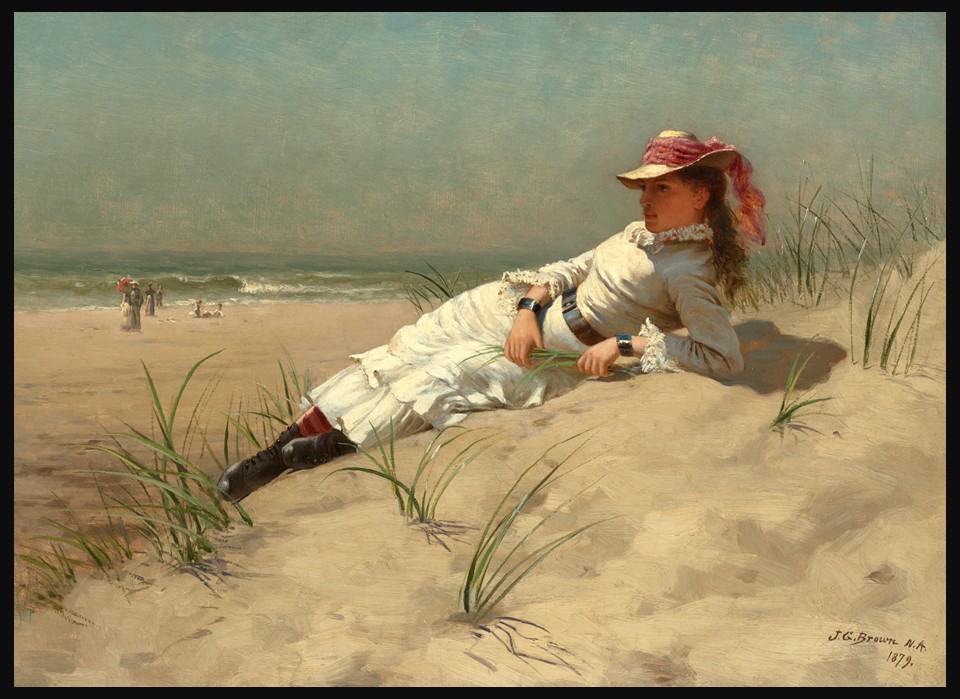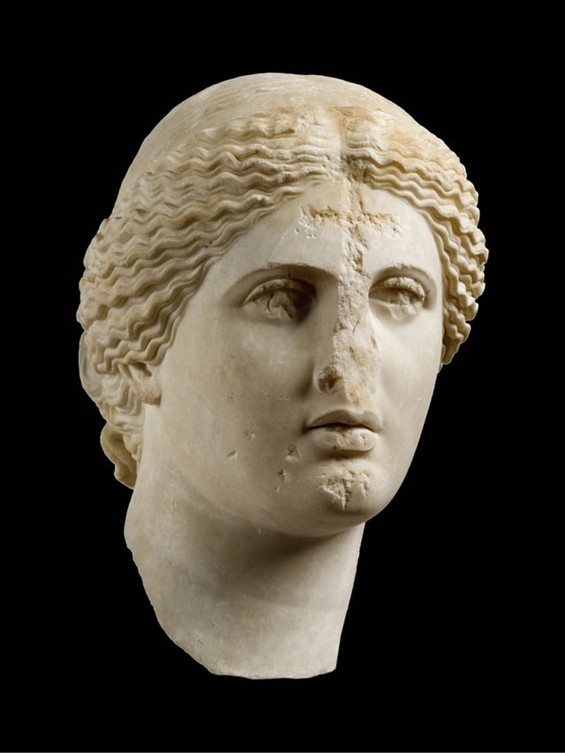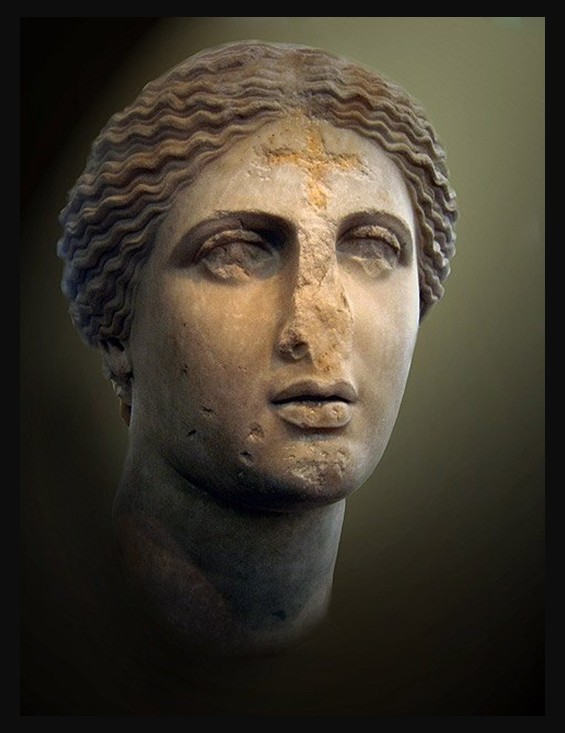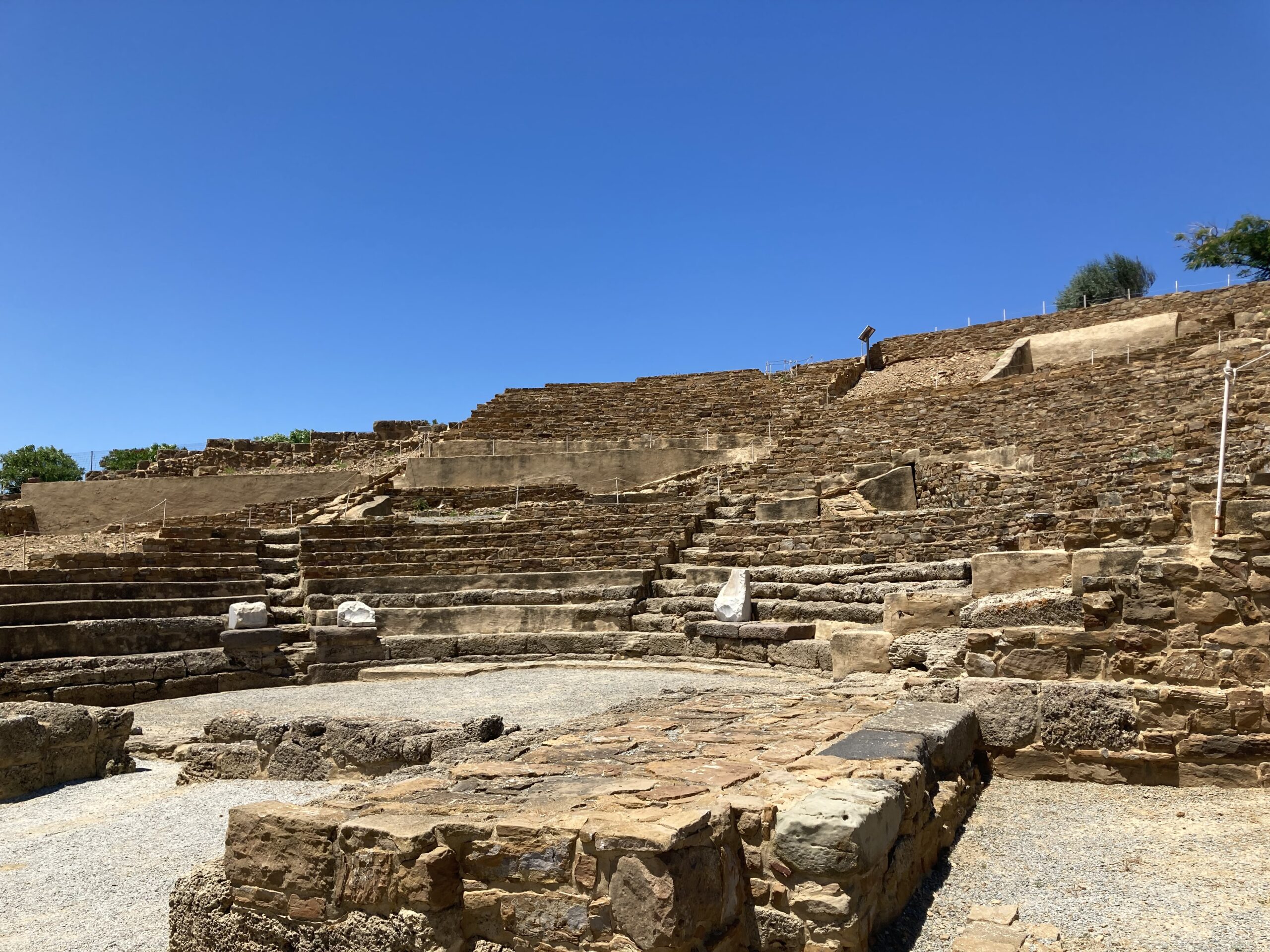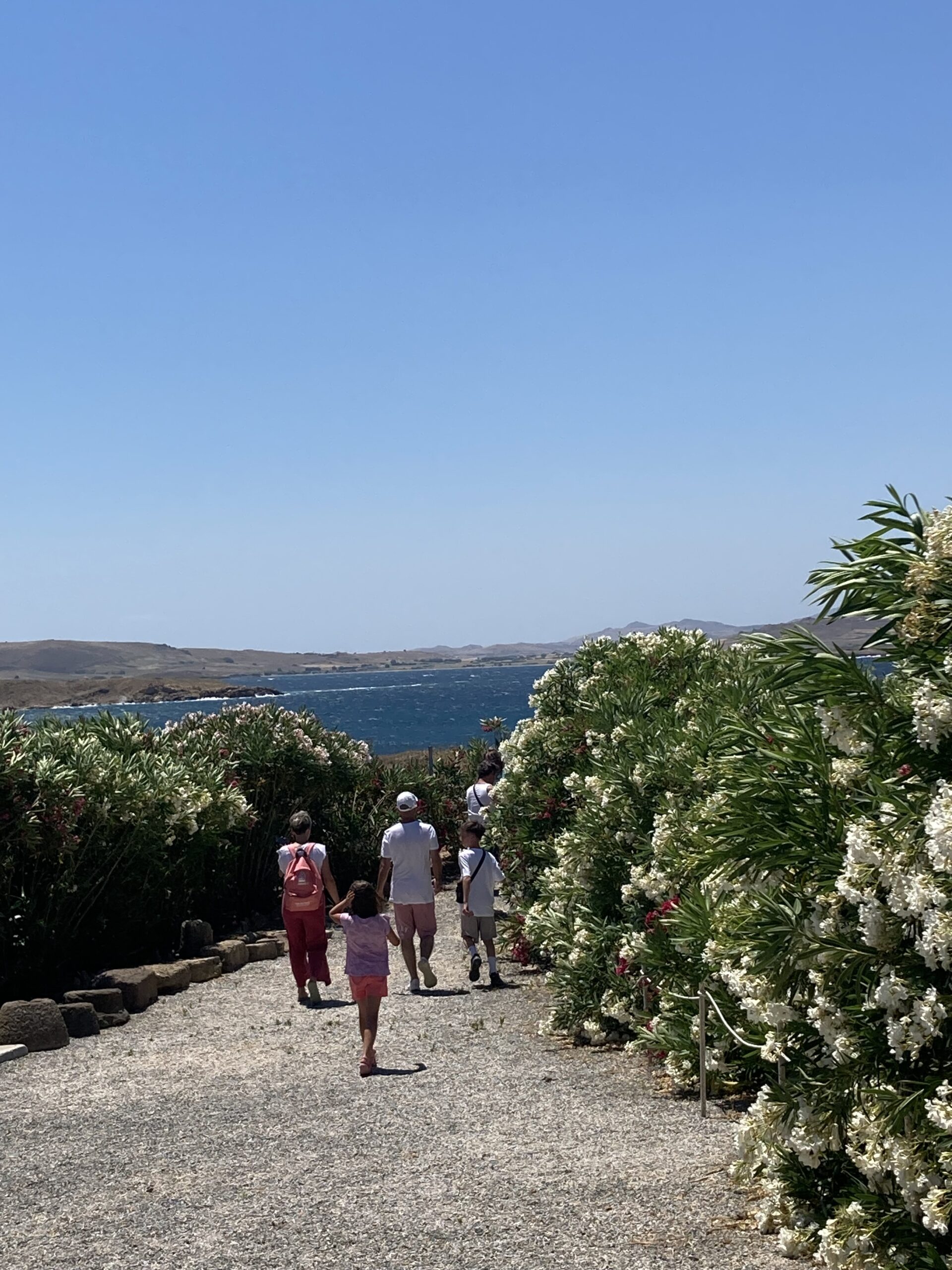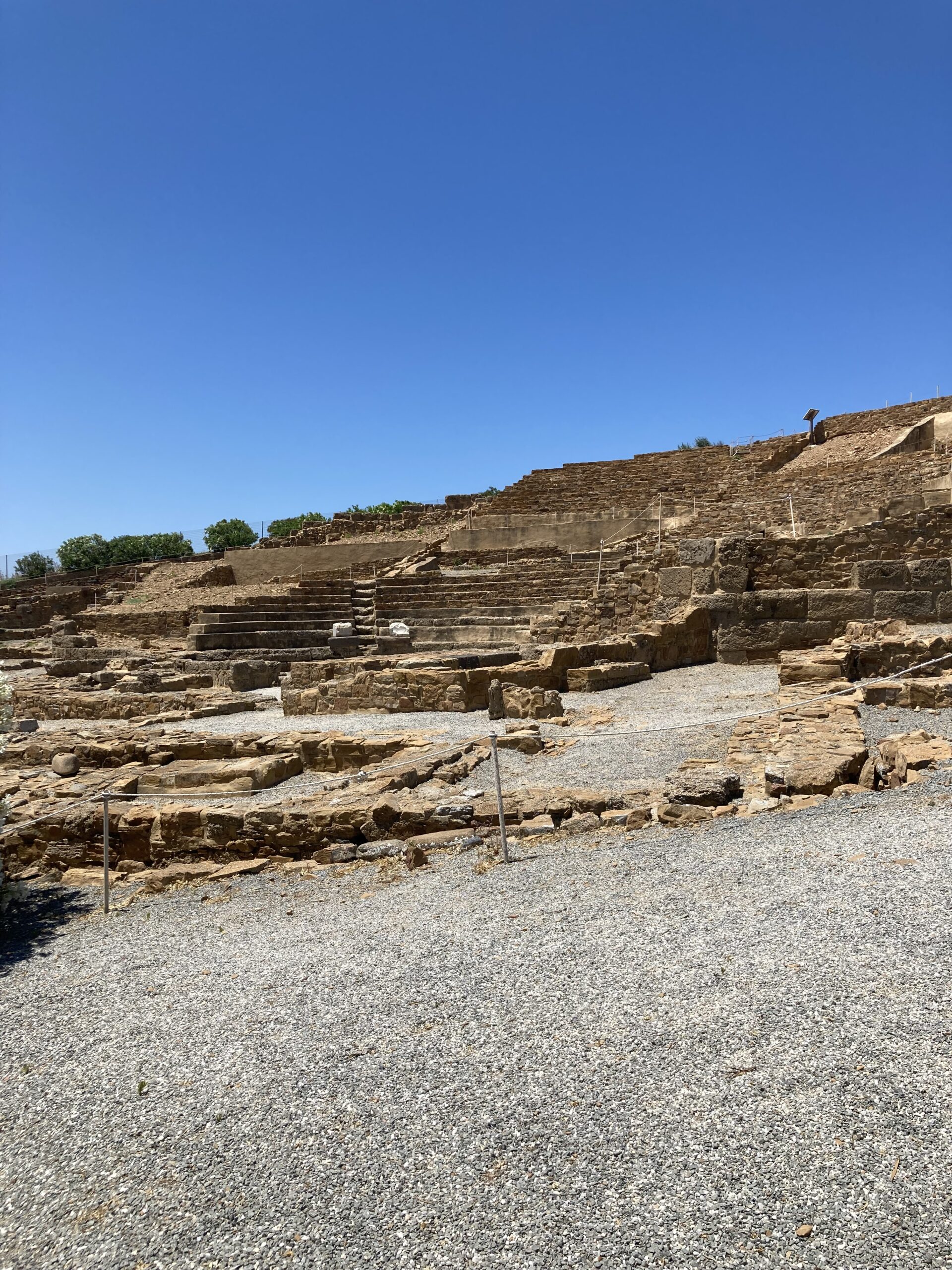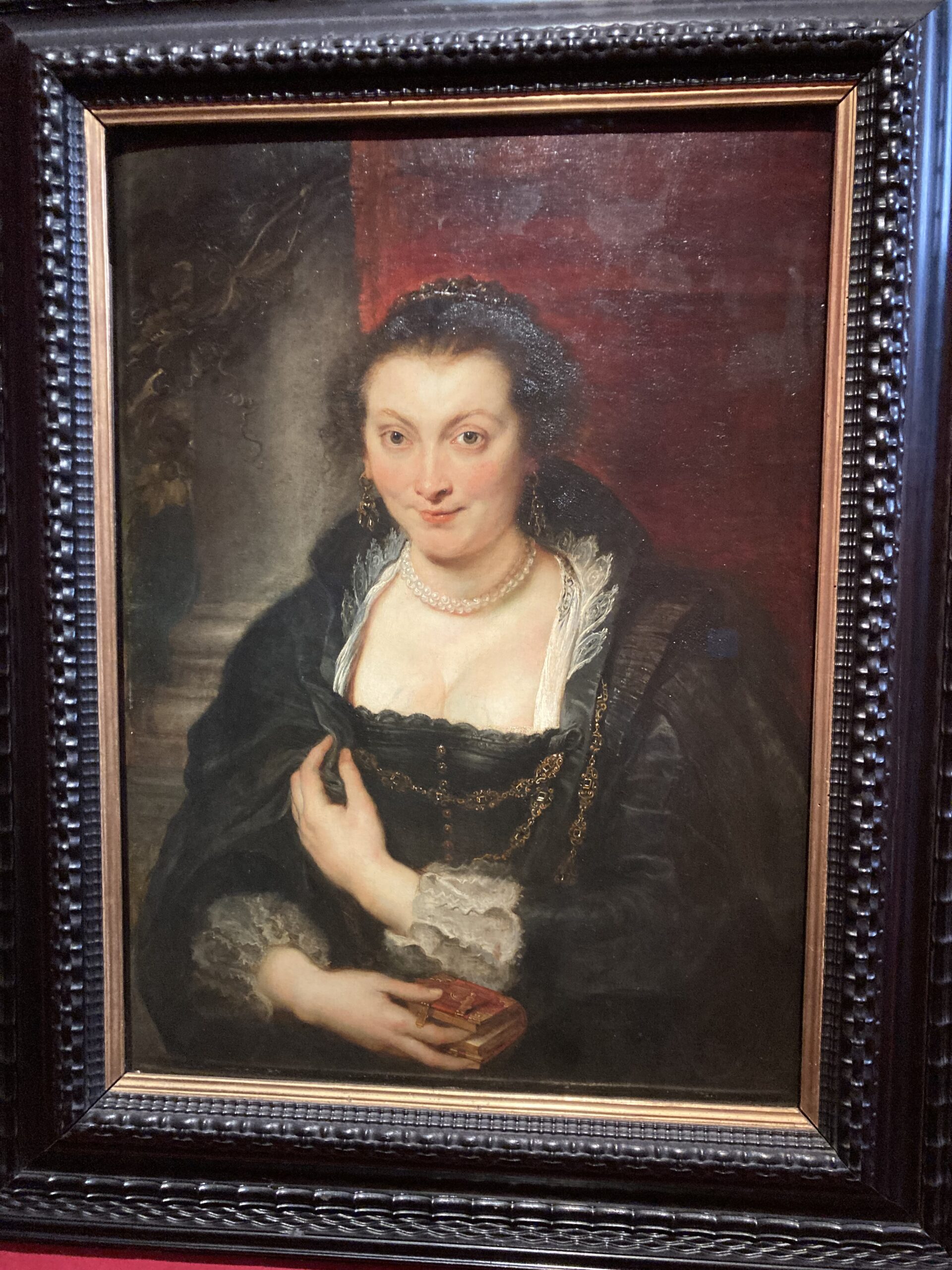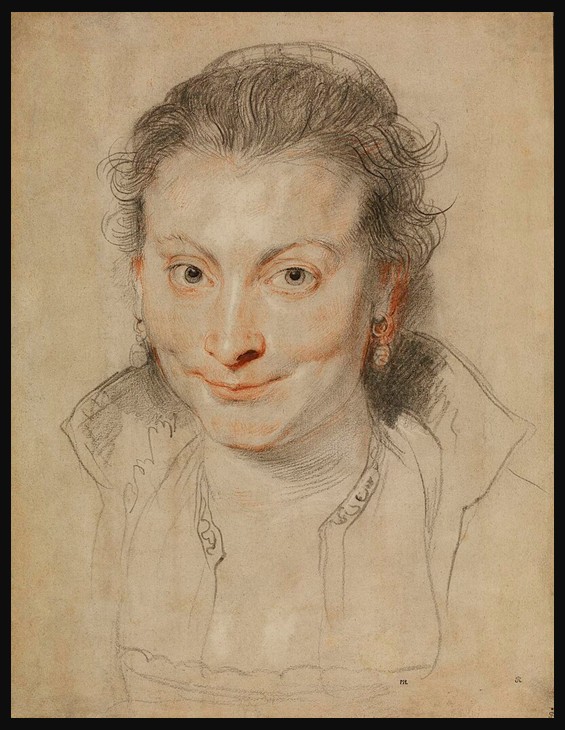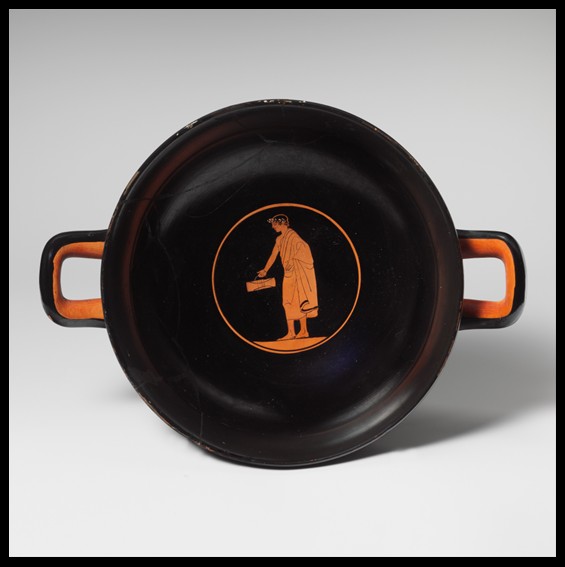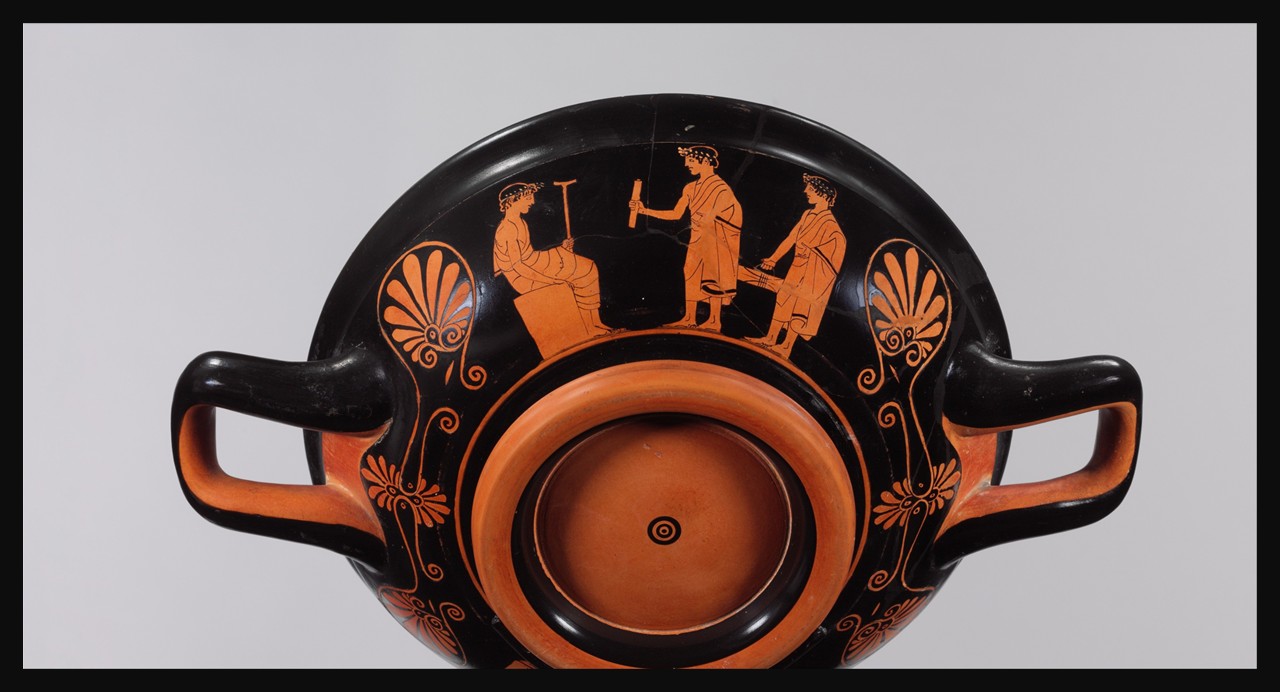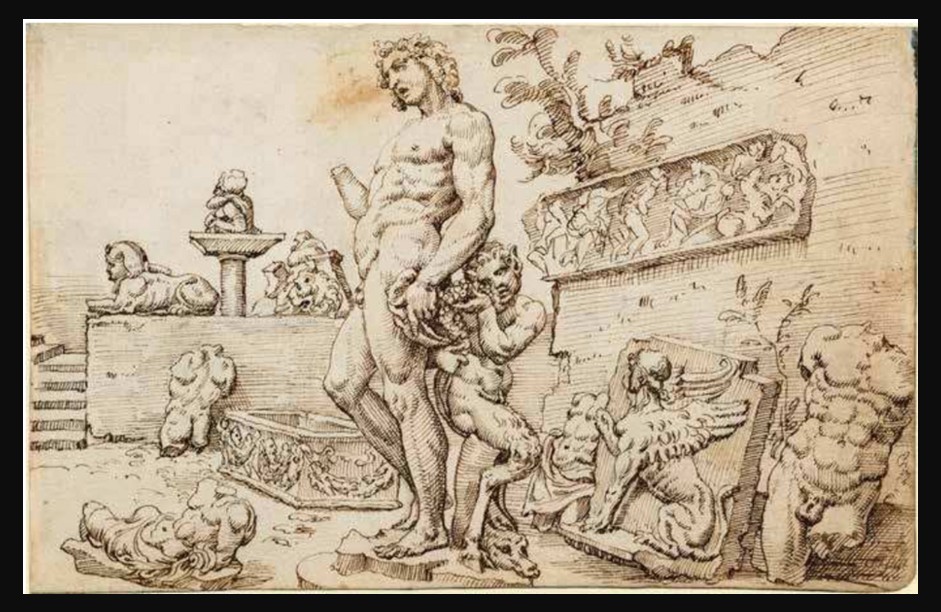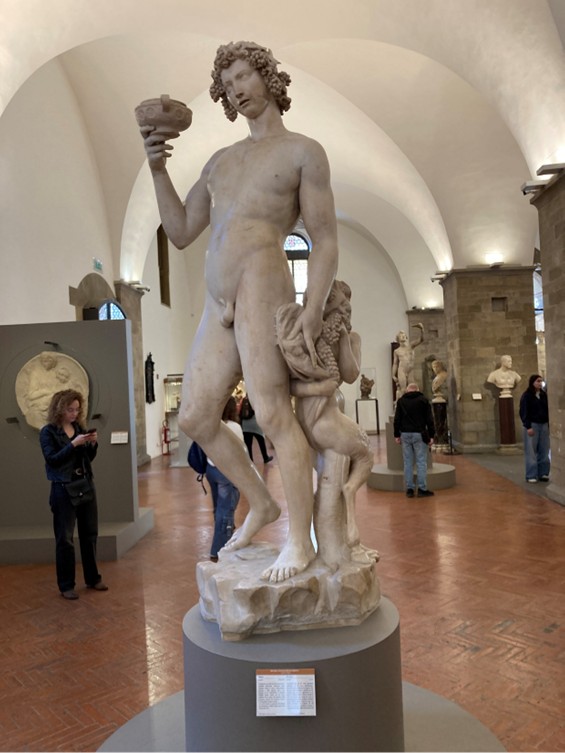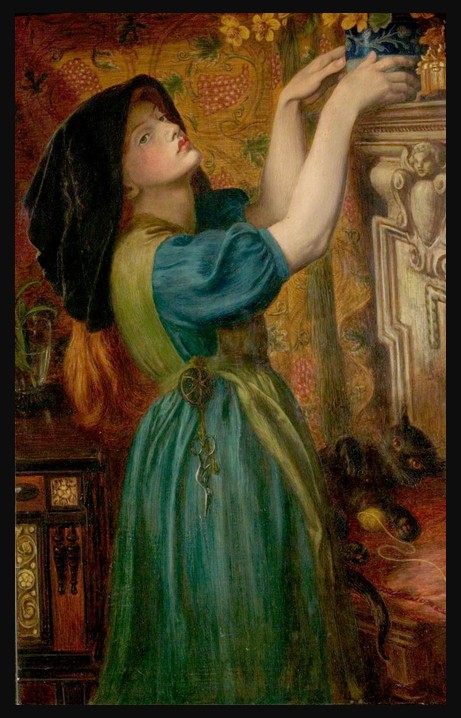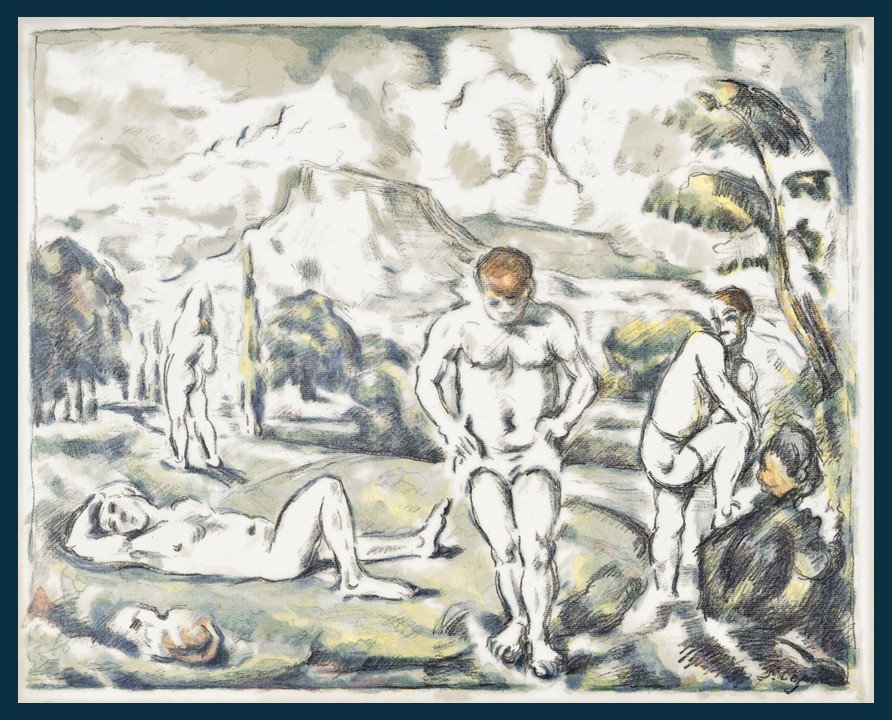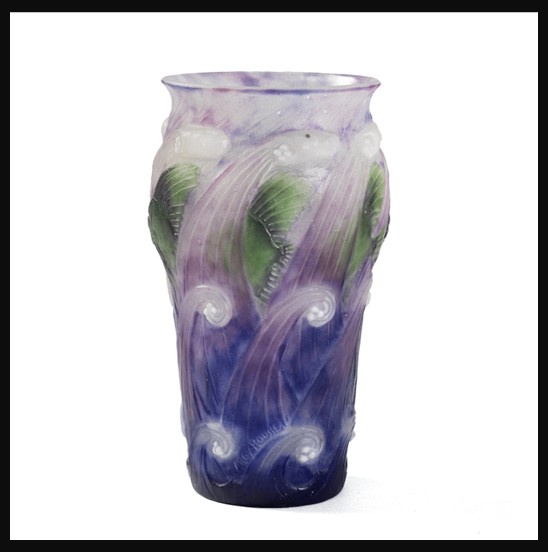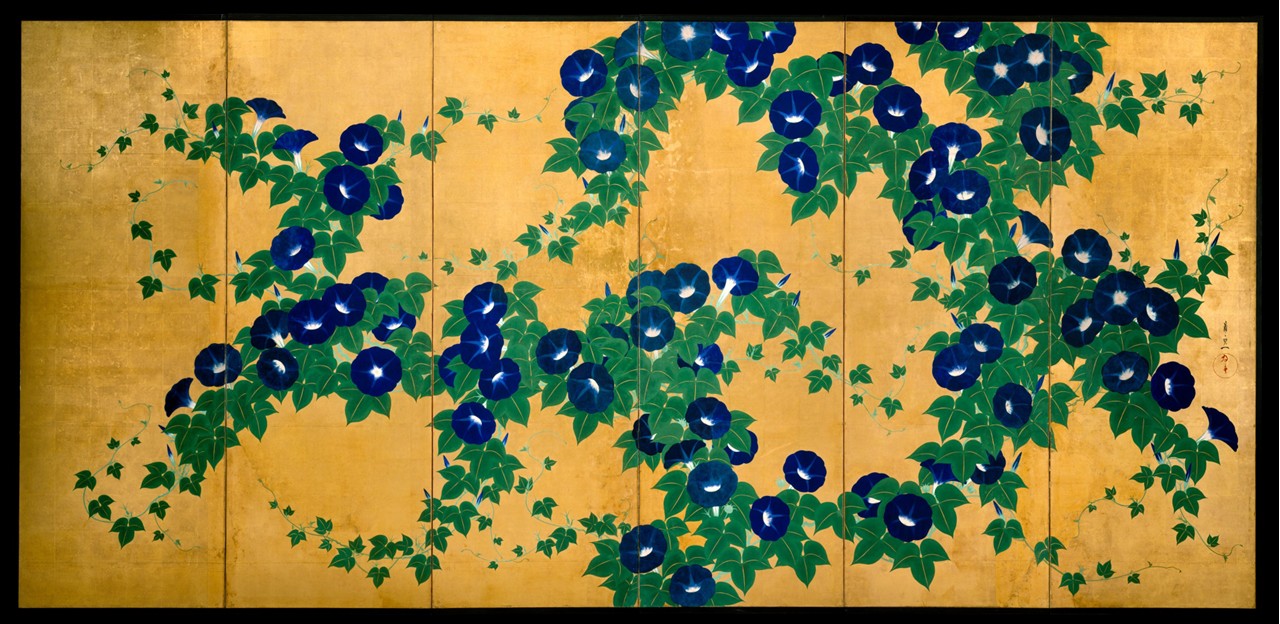
https://www.metmuseum.org/art/collection/search/48982
Morning Glories by Suzuki Kiitsu, a stunning pair of early 19th-century six-panel folding screens housed in The Met, exemplifies the lyrical elegance of the Rinpa school. Against a backdrop of luminous gold leaf, the Morning Glory vines unfurl in rhythmic cascades, their delicate blooms appearing both vibrant and contemplative. Kiitsu’s masterful use of space, color, and pattern invites a meditative gaze, blurring the boundary between nature and design. The screens evoke a quiet moment suspended in time, one that inspired the haiku: Bound in gilded calm, / the morning glories whisper / secrets to the sun. Through this intricate dialogue between natural form and artistic restraint, Kiitsu offers more than decorative beauty, he captures the ephemeral grace of a single September morning made eternal.
Suzuki Kiitsu was a prominent Japanese painter of the Edo period and a leading figure of the Rinpa school of painting. Born in Edo, modern-day Tokyo, Kiitsu was a devoted student of Sakai Hōitsu, who revived and expanded the decorative Rinpa tradition established by artists like Ogata Kōrin and Tawaraya Sōtatsu. After Hōitsu’s death, Kiitsu continued his teacher’s legacy while developing a distinct personal style. He became known for his screen paintings and nature studies that combined bold design with subtle naturalism. Despite being less internationally known than his predecessors, Kiitsu is celebrated in Japan for refining the Rinpa aesthetic with a fresh sensitivity and technical finesse.
Kiitsu’s work is characterized by luminous color, rhythmic composition, and a heightened attention to seasonal motifs such as flowers, birds, and flowing water. His celebrated screen paintings, including Morning Glories, demonstrate his skill in transforming natural subjects into elegant, almost abstract patterns while maintaining a sense of stillness and harmony. He often employed gold or silver leaf backgrounds, setting ephemeral flora against timeless, radiant fields, a hallmark of Rinpa visual poetry. Kiitsu’s legacy rests in his ability to balance reverence for tradition with individual innovation, securing his place as a master of Japanese decorative painting.
The Rinpa school of art, sometimes spelled Rimpa, originated in early 17th-century Kyoto and is one of the most influential styles in traditional Japanese painting. It began with Tawaraya Sōtatsu, who was known for his elegant, stylized depictions of classical literature and nature, often painted on folding screens and fans. A century later, Ogata Kōrin revitalized the style, blending Sōtatsu’s decorative sensibility with a more dramatic use of color, form, and rhythm. Rinpa artists were not part of a formal lineage but were connected by shared aesthetic values, including the use of gold or silver leaf backgrounds, flattened perspective, and an emphasis on seasonal or poetic themes drawn from classical Japanese literature and waka poetry.
The term “Rinpa” itself combines “Rin” from Kōrin and “pa”, meaning “school”, coined much later to describe this loosely associated group of artists. Rinpa works often merge painting, calligraphy, and design, revealing a sophisticated balance between abstraction and representation. While the style was deeply rooted in Japanese tradition, it also showed openness to Chinese and Korean influences in brushwork and composition. Suzuki Kiitsu, working two centuries later, was part of a later Edo-period revival of Rinpa led by Sakai Hōitsu. Though removed in time, Kiitsu embraced and expanded Rinpa’s visual language, ensuring its continued vitality and influence into the modern era.
Morning Glories is a monumental pair of six‑panel folding screens, a byōbu, crafted with ink, color, and gold leaf on paper. The work creates a vivid, expansive field in which rich blues and greens of Morning Glory blossoms emerge from a radiant gold-leaf ground. Kiitsu omits any spatial context or background elements, concentrating instead on the lush proliferation of flowers and leaves. The blossoms on the right screen rise upward from the ground, while those on the left cascade down, as if held by an invisible trellis, a composition that balances exuberance with careful orchestration.
This screen set reflects Kiitsu’s dual influences: trained as a textile dyer and a pupil of Sakai Hōitsu, he skillfully merges decorative pattern sensibility with naturalistic rendering. The thick, mineral pigments against the gold leaf evoke the luxurious surface of textiles, while subtle attention to botanical form ensures each petal and vine feels believable and dynamic. The tension between decorative abstraction and natural realism is characteristic of Rinpa aesthetics, yet in this work Kiitsu brings a fresh vision, his Morning Glories are botanical yet stylized, rhythmic yet alive. As a signature masterpiece of the Edo‑period Rinpa revival, these screens embody both opulent décor and quiet botanical poetry.
As a fitting close to this meditation on Suzuki Kiitsu’s Morning Glories, it is worth noting that the morning glory is the traditional birth flower of October, a symbol of fleeting beauty, affection, and renewal. In Kiitsu’s masterful screens, this humble bloom becomes a grand subject, elevated through shimmering gold and rhythmic composition into something timeless. The flower’s delicate form and brief bloom are captured in suspended motion, embodying both the transience of nature and the elegance of Edo-period design. In this radiant work, Kiitsu not only honors the spirit of the Rinpa school but also transforms a seasonal motif into a lasting celebration of life’s quiet, impermanent grace.
For a Student Activity, inspired by the MET folding screen titled Morning Glories by Suzuki Kiitsu, please… Check HERE!
Bibliography: https://www.metmuseum.org/art/collection/search/48982
